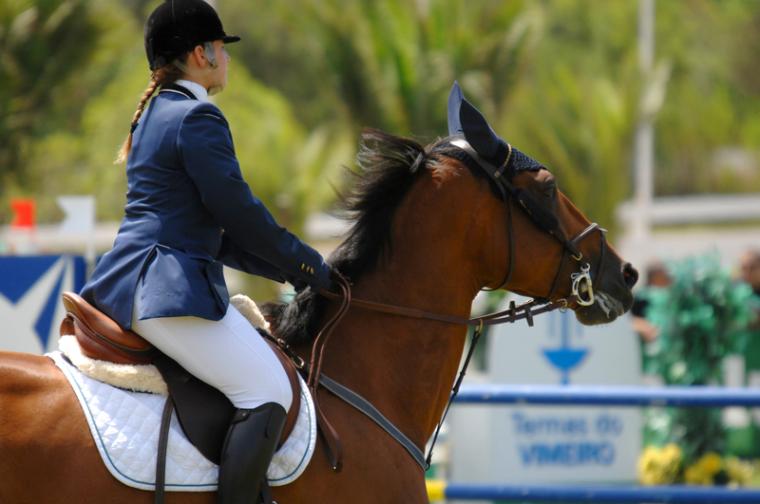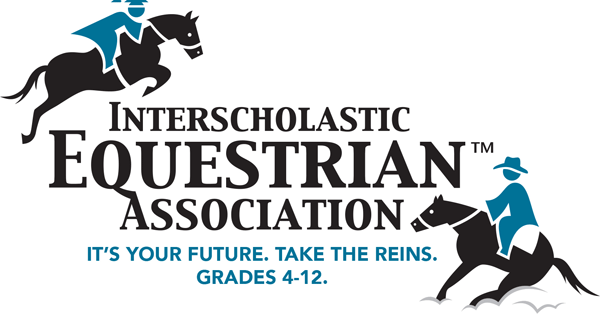
The Interscholastic Equestrian Association has the mission of introducing students in private and public middle and secondary schools (primarily ages 9 through 19) to equestrian sports. It was established in 2002 and has grown with each passing year; IEA now has over 14,500 members in 46 states across North America.
The IEA supports three disciplines: Hunt Seat, Western, and Dressage. There is no need for any rider to own a horse because competition horses are provided at each venue to the contestant. Students can earn scholarships toward their college education through awards in competition and through sportsmanship activities.
In 2011, the IEA established the Benevolent Fund to assist riders and coaches in need through programs such as the IEA Financial Assistance Program and the IEA Coaches Assistance Grant.

IEA Competition Format
The unique aspect of the competitions, both at the local and national level, is that none of the riders will supply their own horses or tack. Instead, the host team arranges for the horses and equipment. Since the horse is new to the rider, the scores are based upon horsemanship and equitation. All disciplines offer a variety of ability levels from beginner through advanced. The IEA has set guidelines for the placement of new riders entering the IEA to allow for the unique program format of riding an unfamiliar horse.
Sports Destination Management: IEA is not a typical governing body or event owner.
Roxane Durant: No, that’s the thing that makes us different. As a membership organization, the coaches join first, and then the coach will organize a team of at least three riders. The riders join IEA as well. Another thing that makes us different is that our organization is based on not owning a horse. Each competition provides a pool of horses, and the riders draw a horse from their ability level in each discipline. It’s sort of like a potluck supper.
SDM: Does the format present a challenge at all?
Durant: It hasn’t been a hurdle for us. The collegiate programs are based on the same blind-draw format. If kids wanted to be prepared to be on college teams, they start here. It gets you used to riding an unfamiliar horse.
 SDM: Does that format make things easier when it comes to recruitment of members?
SDM: Does that format make things easier when it comes to recruitment of members?
Durant: It really does. The cost of owning and maintain a horse can be prohibitive; this format opens riding to a lot more kids.
SDM: How did the pandemic affect you?
Durant: COVID came right at the beginning of our finals season; we typically have a regular season of shows and those feed into the finals. We had to shut down our Nationals in 2020. IEA created a task force and wrote rules and regulations so that people who were hosting events would know what they needed to do to comply.
We normally have a lot of rules, such as one that stated in order to have a show, there must be a minimum number of entries. We changed that to read that people could make shows as small as they needed. We also worked to create schedules to move people in and out of buildings so that there would be a cap on how many people were there at one time. Using that, we were able to host most of our events.
Unfortunately, many venues were not even admitting parents and that was rough. We had shows that were using live feeds on Facebook Live or Zoom or YouTube to some extent and parents were organizing tailgates back at the hotels. We really encouraged coaches to video the riders, and we provided tutorials on how to use Zoom and Facebook Live.
SDM: Once the vaccine became available, did it help?
 Durant: Well, unfortunately, every state was opening at different speeds, so we organized the country into smaller pods. We knew in many cases, people couldn’t cross state boundaries to compete. We were able to move some of the qualifying shows around to be held in states that had easier travel rules, but we still wound up making a lot of changes; for example, one of our National Finals had to be moved from upstate New York to Texas.
Durant: Well, unfortunately, every state was opening at different speeds, so we organized the country into smaller pods. We knew in many cases, people couldn’t cross state boundaries to compete. We were able to move some of the qualifying shows around to be held in states that had easier travel rules, but we still wound up making a lot of changes; for example, one of our National Finals had to be moved from upstate New York to Texas.
SDM: What do you look for when you are seeking a location for an event like Nationals?
Durant: The first thing we look for is whether there is a pool of horses in the area. There may be teams with horses, or there may be horses we can rent or lease – or borrow for the event. After that, we’re looking for an indoor venue: a place with a minimum of 1,000 seats. Normally, each rider has a high percentage of parents, grandparents, etc. who come to see them compete – at least four people. We also look for a place with hotels and restaurants in the immediate area, and we want to be fairly close to a major airport since our riders come from all over the country to compete.
SDM: How many riders are competing?
Durant: In a show held during a regular season, we’ll get 100 to 200 riders. In Nationals, the numbers are higher; for example, in National Finals Hunt Seat, there are 500 riders, and in Western and dressage, we’ll get 250 each. We do a total of 800 to 900 shows per year in a typical year. Each group of IEA is responsible for hosting or co-hosting one show; all those feed into Regionals, Zones, and ultimately into Nationals.
SDM: What do you think is the most challenging aspect of siting IEA events?
Durant: Because we are tapping into a borrowed pool of horses, we have to move events around so that we’re not using the same group of horses, and because we don’t want the travel burden on our teams to be the same every year.
SDM: Do you work with CVBs and sports commissions?
Durant: We sometimes do but for the most part, we do things on our own.
SDM: What kind of venues do you tend to use?
Durant: Most of the time, we use fairgrounds with a good size coliseum or something like that.
SDM: Obviously, IEA has grown; how is that working in comparison to the National Collegiate Equestrian Association (NCEA)?
Durant: We are seeing consistent growth in the IEA. We work with NCEA. Initially they had a 10-year period to get to championship level; since that time, they have regrouped and reworked their application for Division II and Division III schools who want to be a part of the program. Originally, the colleges had to offer both Hunt Seat and Western but now, they have changed that so that only one discipline is needed.
SDM: What do you think equestrian’s chances are of becoming a championship sport at the NCAA level?
Durant: It is hard to say. On one hand, it’s hard to fit equestrian sport into NCAA; it works differently from other championships. The Intercollegiate Horse Shows Association (IHSA) is also very active, but I don’t think one of those – NCEA or IHSA – trumps the other; they have very different formats. But it would be inherently good for the equine industry to see equestrian sports included in NCAA athletics. Our athletes deserve those opportunities and recognition!

 www.rideiea.org
www.rideiea.org